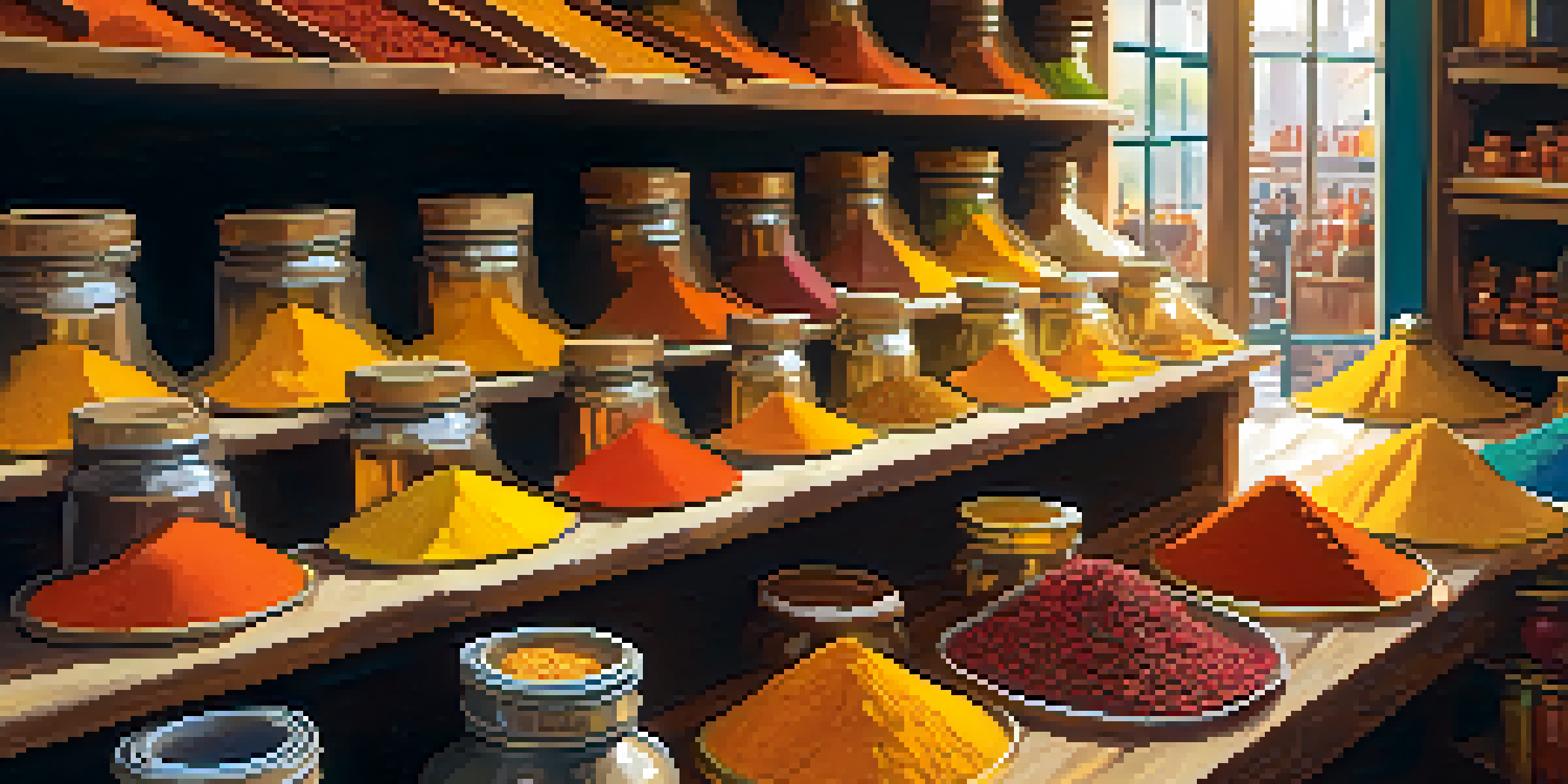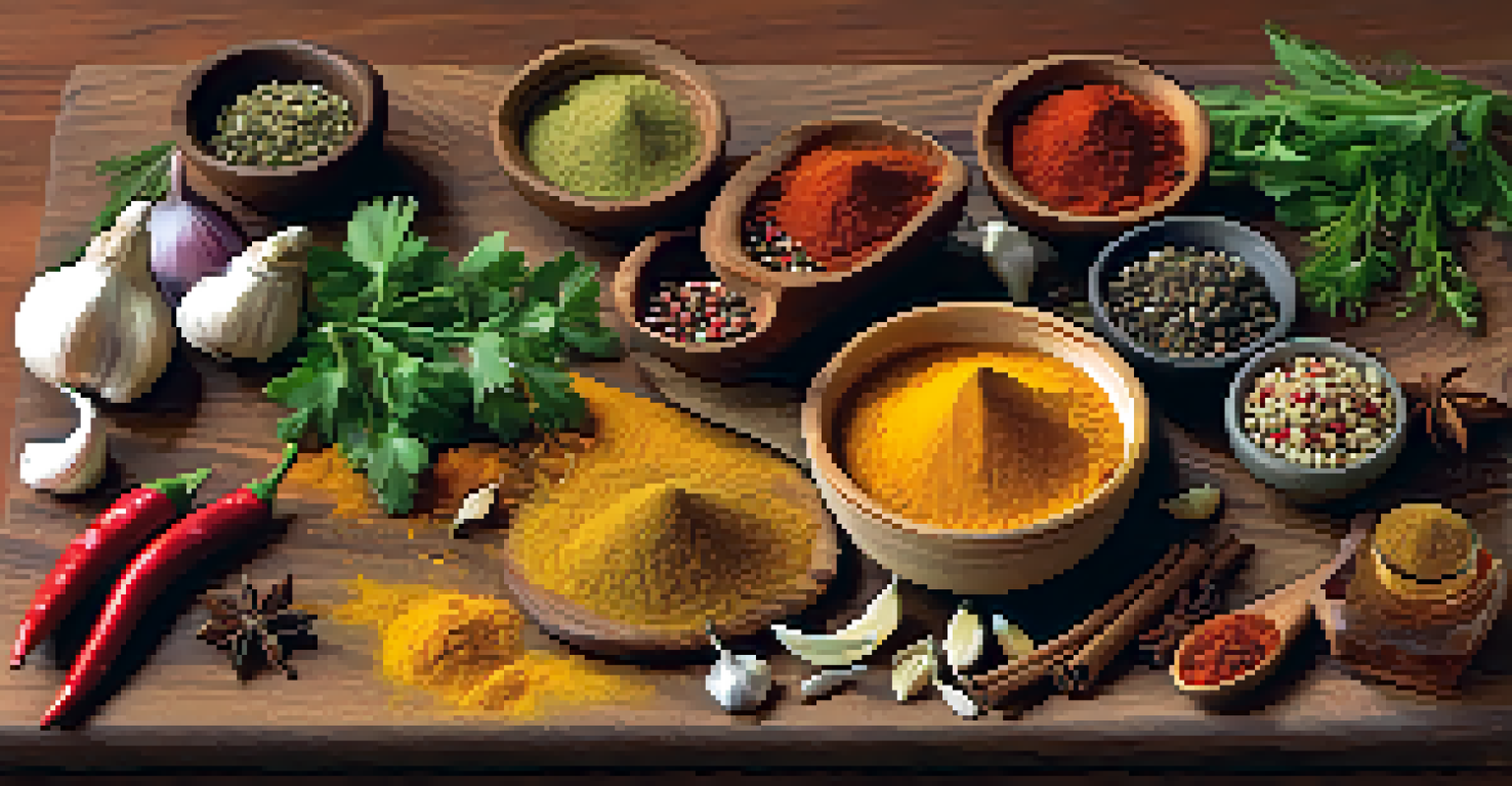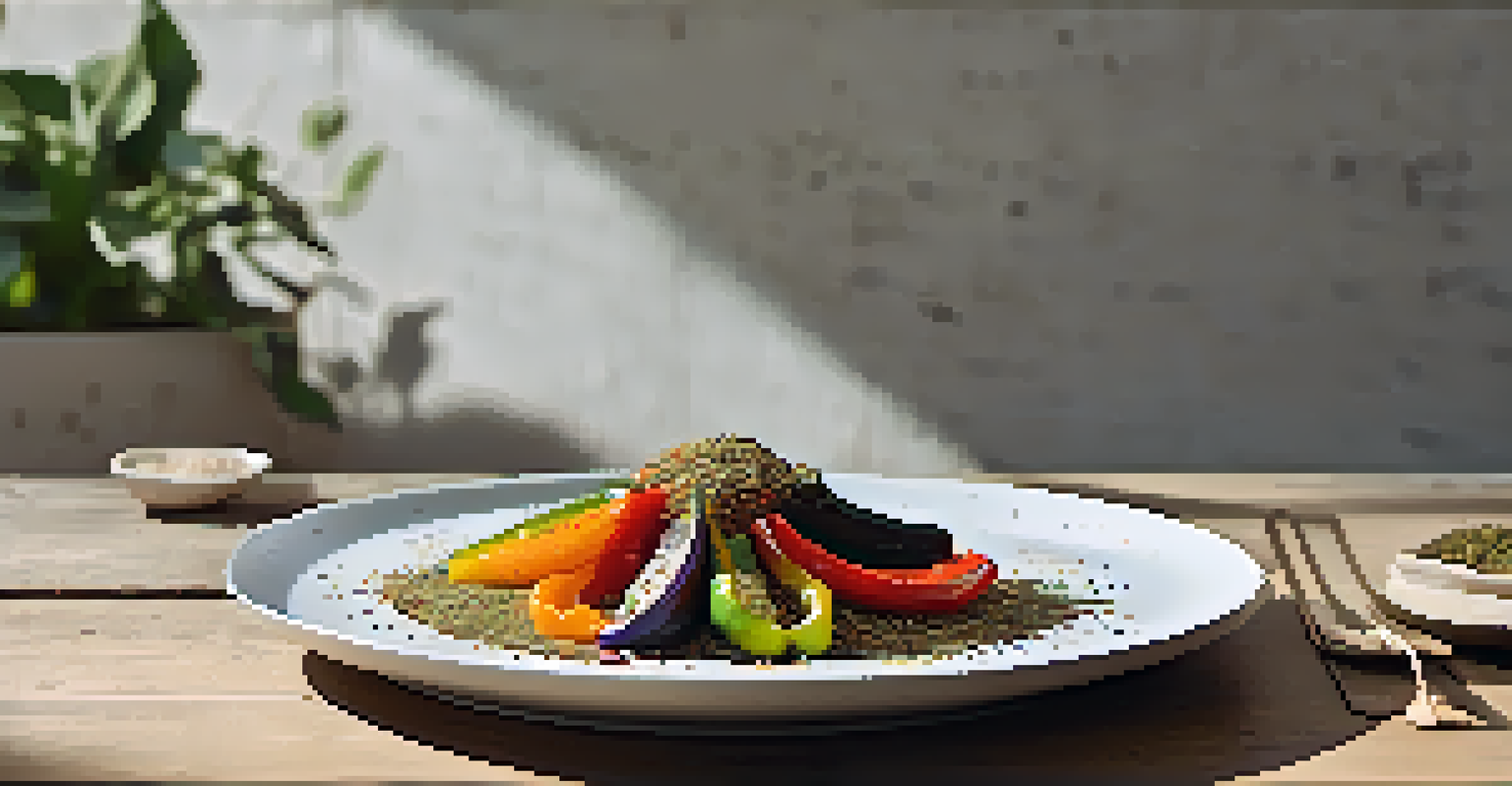Spice Blends: Creating Flavorful Vegetarian Dishes

Understanding the Basics of Spice Blends
Spice blends are mixtures of various spices that create a unique flavor profile. Think of them as a shortcut to elevating your culinary creations without needing to master each spice individually. By understanding the basics of spice blends, you can easily enhance the taste of your vegetarian dishes.
Spices are the world’s best flavor enhancers. They can turn every dish into a gourmet experience.
Common spices used in blends include cumin, coriander, and paprika, each offering a distinct flavor. For example, cumin adds a warm, earthy note, while paprika contributes a sweet, smoky essence. When combined, these spices can transform simple ingredients into something extraordinary.
Creating your own spice blends allows for personalization, catering to your taste preferences. You can experiment with ratios and discover new combinations that excite your palate. This process not only enhances your cooking but also inspires creativity in the kitchen.
Popular Spice Blends for Vegetarian Cooking
There are several popular spice blends that are perfect for vegetarian dishes. For instance, garam masala, a staple in Indian cuisine, combines spices like cardamom, cloves, and cinnamon, providing warmth and complexity to vegetable curries. Similarly, za'atar, a Middle Eastern blend, features thyme, sesame seeds, and sumac, adding a zesty kick to roasted vegetables.

Another excellent option is Italian seasoning, which typically includes basil, oregano, and rosemary. This blend is fantastic for enhancing pasta dishes, pizzas, or a simple vegetable sauté. By incorporating these blends, you can easily add an international flair to your meals.
Elevate Dishes with Spice Blends
Using spice blends can transform simple vegetarian meals into flavorful culinary creations.
Lastly, consider creating a spice blend tailored to your favorite cuisines. Whether it's a spicy chili powder mix or a refreshing citrus blend, the possibilities are endless. The key is to have fun and explore flavors that resonate with you.
How to Use Spice Blends in Cooking
Using spice blends effectively can take your vegetarian dishes to new heights. Start by adding a small amount to your oil or broth as a base, allowing the spices to bloom and release their flavors. This technique works wonders in soups, stews, and stir-fries.
Cooking is like love. It should be entered into with abandon or not at all.
For roasted vegetables, toss them in a spice blend mixed with olive oil before cooking. The heat will intensify the flavors, resulting in a mouthwatering dish. You can also sprinkle the blend over finished dishes to enhance aroma and presentation.
Don’t hesitate to experiment with different spice blends in marinades or dressings. A simple yogurt-based dressing spiced with garam masala can elevate a salad, while a za'atar-infused marinade will bring life to grilled vegetables. The versatility of spice blends makes them a must-have in your culinary toolkit.
Combining Spices for Unique Flavor Profiles
Combining different spices can lead to unique and exciting flavor profiles in your vegetarian dishes. For instance, mixing sweet spices like cinnamon with savory ones like cumin can create a balanced and complex taste. This approach opens up a world of culinary possibilities.
Consider creating a Moroccan-inspired blend by combining coriander, cinnamon, and ginger. This blend pairs beautifully with roasted root vegetables or chickpeas. The interplay of sweet and spicy notes will delight your taste buds and impress your guests.
Create Your Own Unique Blends
Experimenting with different spices allows you to personalize flavors and discover exciting combinations.
Experimentation is key to discovering your signature blends. Don't be afraid to play around with ratios and try new combinations, like adding a hint of chili powder to a sweet spice mix. The more you explore, the more you'll learn about your flavor preferences.
Storing and Preserving Your Spice Blends
Proper storage of your spice blends is essential for maintaining their freshness and potency. Store your blends in airtight containers, away from heat and light, to prevent them from losing flavor. A cool, dark pantry is ideal for preserving the quality of your spices.
Consider labeling your containers with the blend name and the date of creation. This practice not only helps you keep track of freshness but also adds a personal touch to your cooking. Most spice blends can last six months to a year if stored correctly.
If you find yourself with extra spice blends, don’t hesitate to share them with friends or family. Homemade blends make thoughtful gifts, especially when paired with a recipe card. This way, you can spread the joy of cooking and flavor exploration.
Incorporating Spice Blends into Everyday Meals
Incorporating spice blends into your everyday meals can make cooking more enjoyable and flavorful. Start by adding a pinch of your favorite blend to everyday dishes like soups, salads, and grains. Even a small amount can make a big difference.
For example, sprinkle some Italian seasoning over roasted potatoes for a delicious side dish or mix a bit of curry powder into your rice for a fragrant twist. These small changes can elevate mundane meals into exciting culinary experiences.
Proper Storage for Freshness
Storing spice blends in airtight containers helps maintain their potency and flavor for longer periods.
Remember that spice blends are not just for elaborate dishes. They can easily be used in quick weeknight meals, allowing you to enjoy flavorful food without extra effort. Embrace the convenience and versatility of spice blends in your daily cooking.
Exploring Global Vegetarian Cuisine with Spices
Spices are the backbone of global cuisines, and exploring them can lead to delightful vegetarian dishes. From Indian curries to Thai stir-fries, each culture offers unique spice blends that can inspire your cooking. This journey can expand your palate and introduce you to new flavors.
For instance, try making a Thai green curry using a store-bought or homemade curry paste. Combine it with coconut milk and fresh vegetables for a dish bursting with flavor. This is a fantastic way to experience the vibrant flavors of Thailand.

As you explore, take note of which spice blends resonate with you. Create a collection of favorites that inspire your cooking adventures. This exploration not only enhances your meals but also helps you appreciate the rich cultural significance of spices.